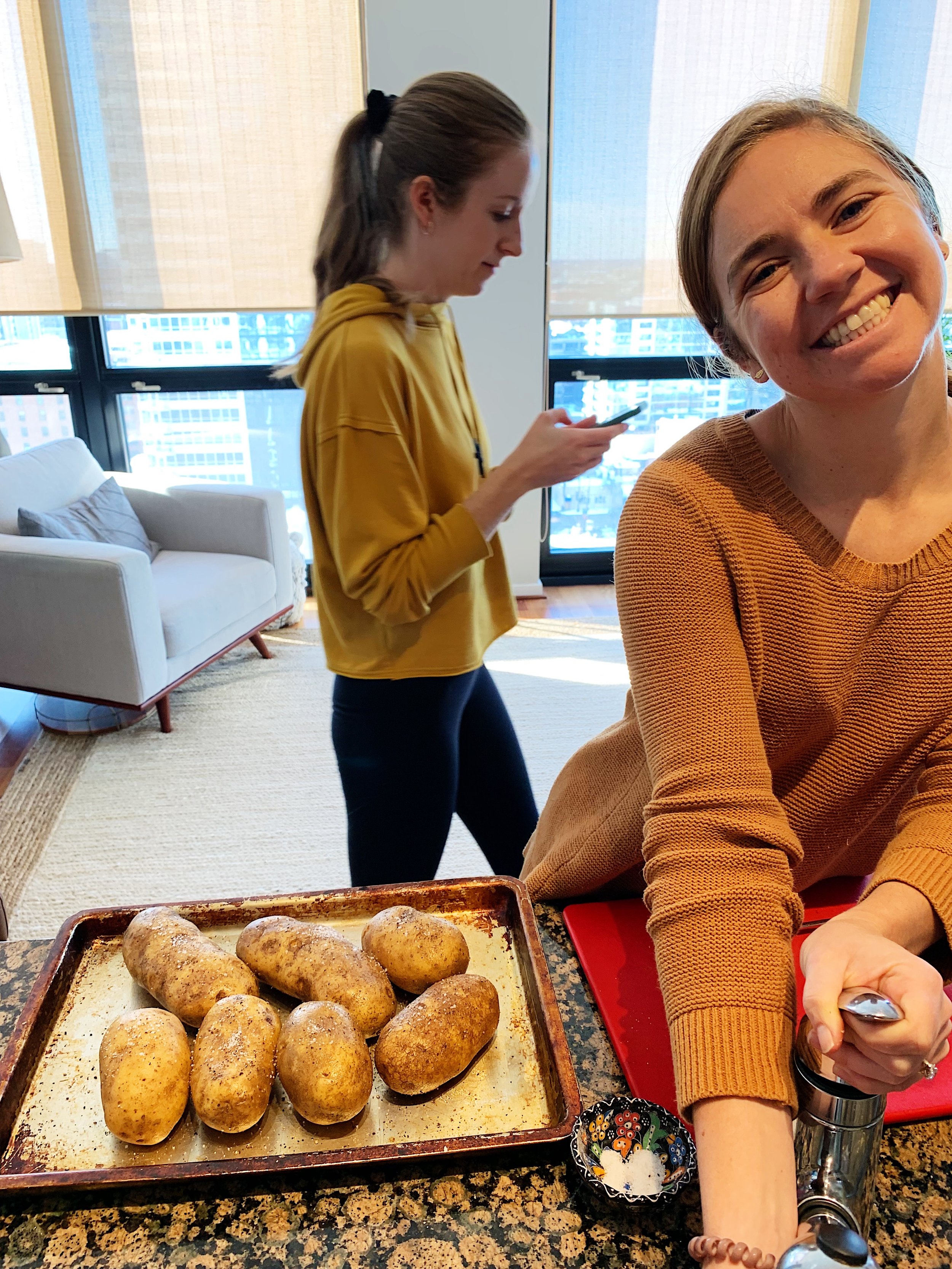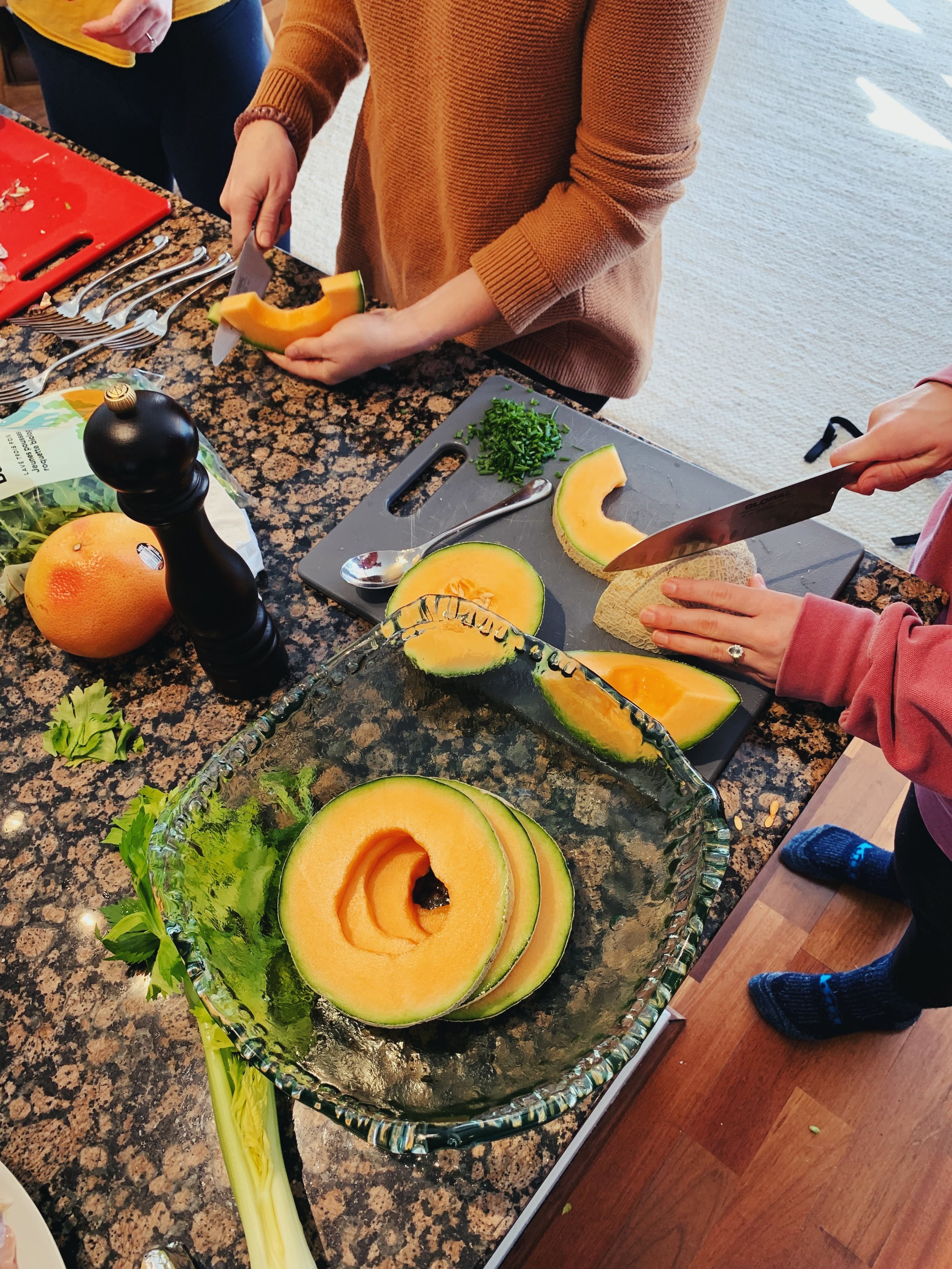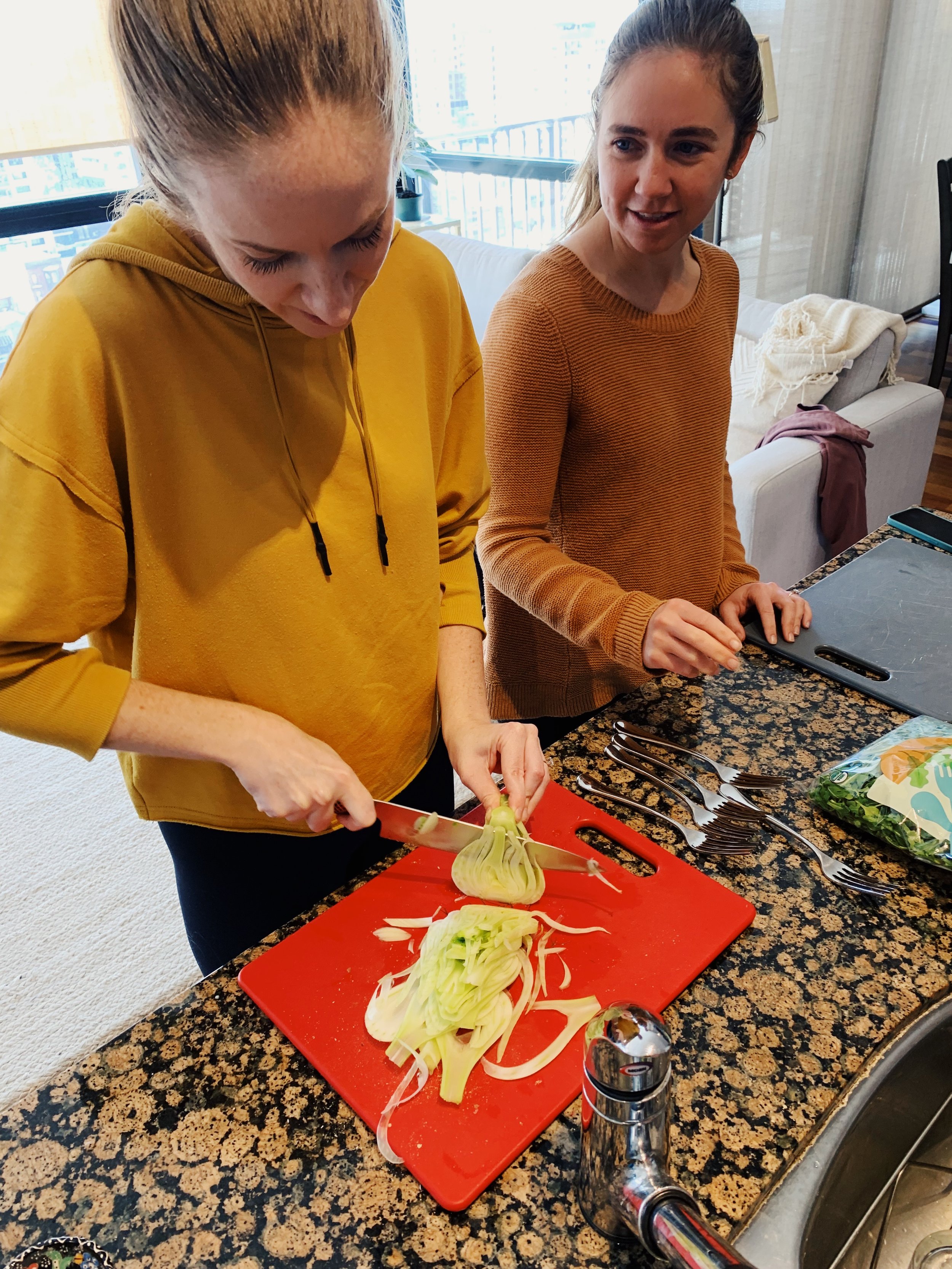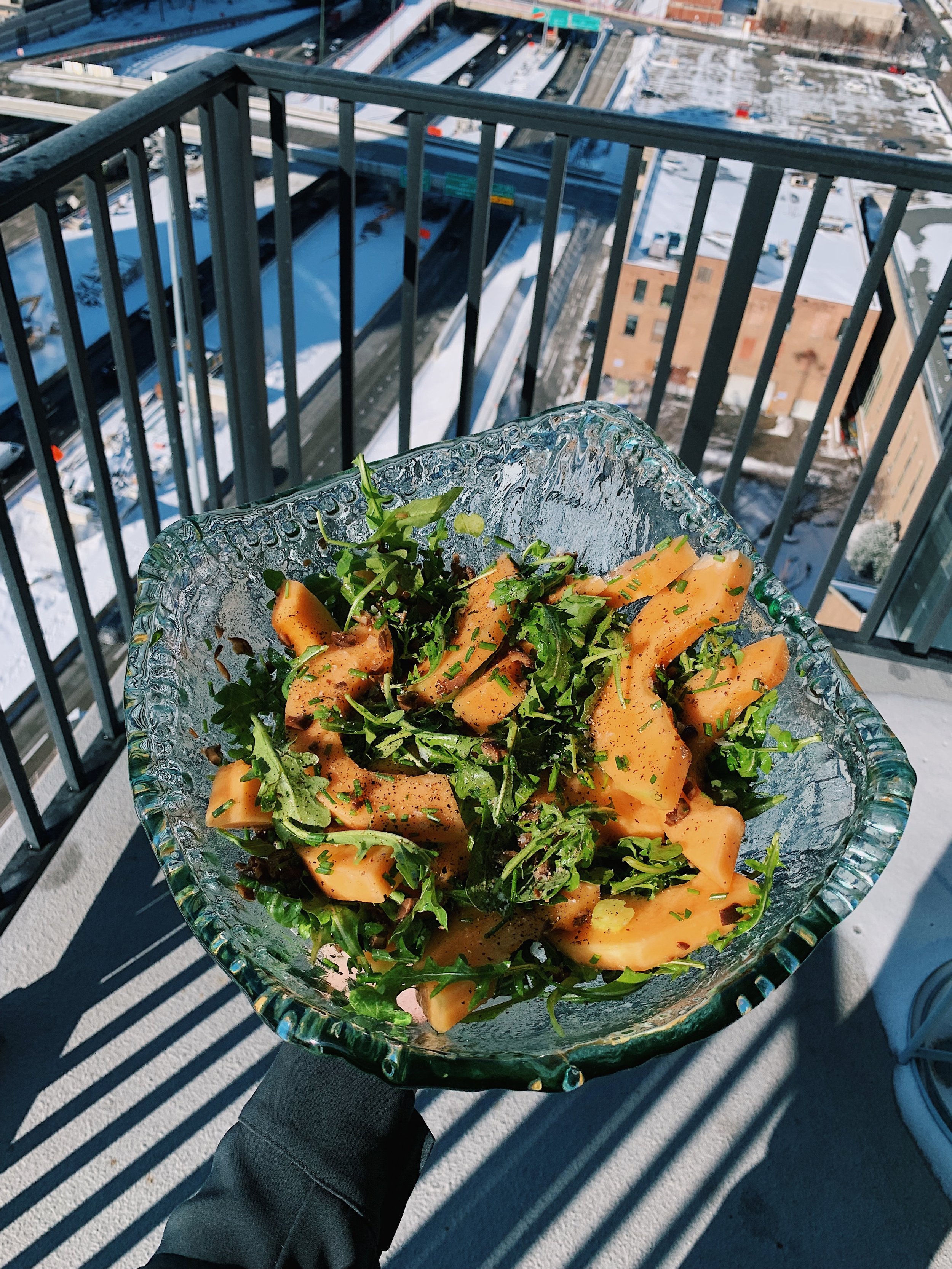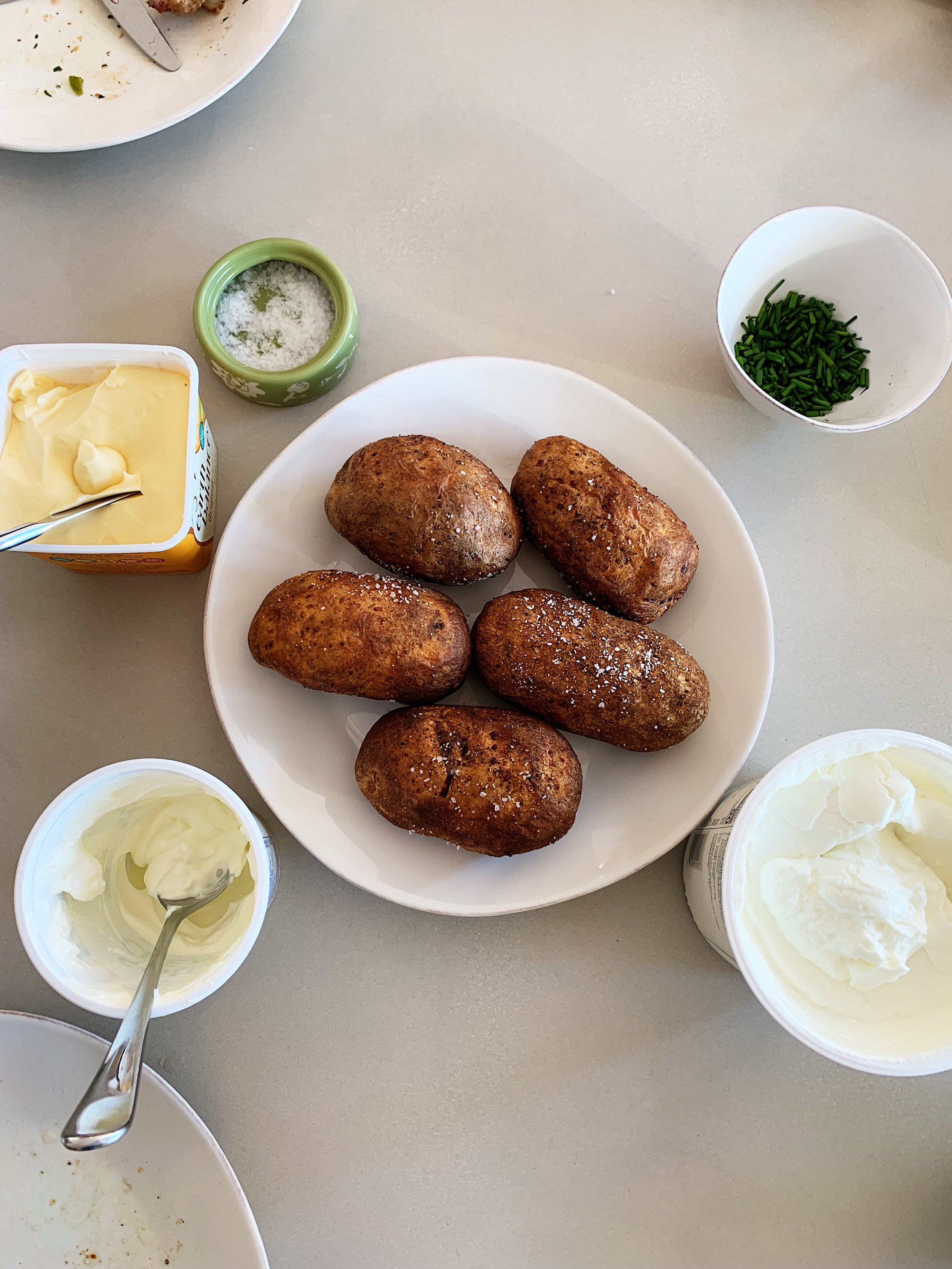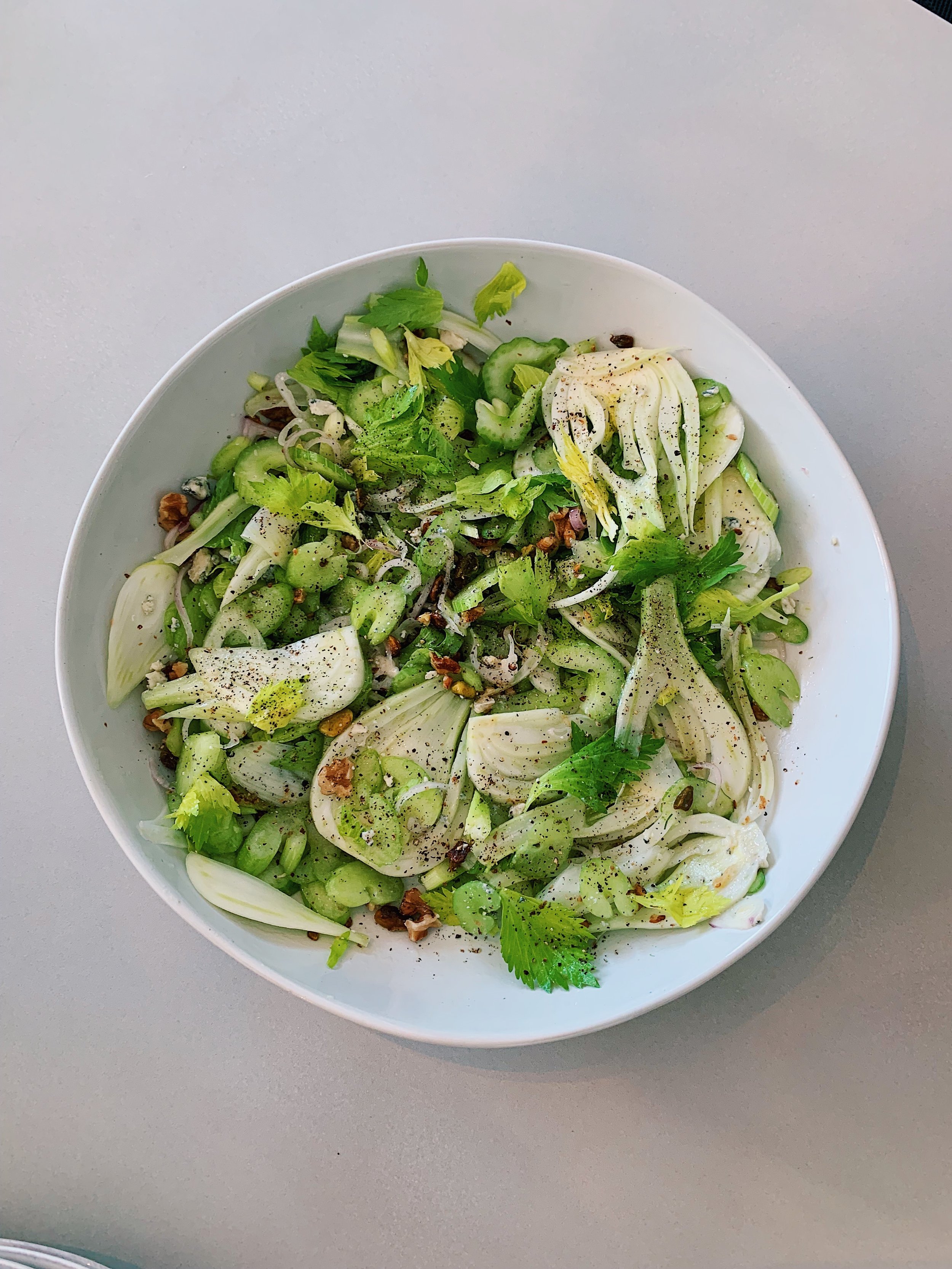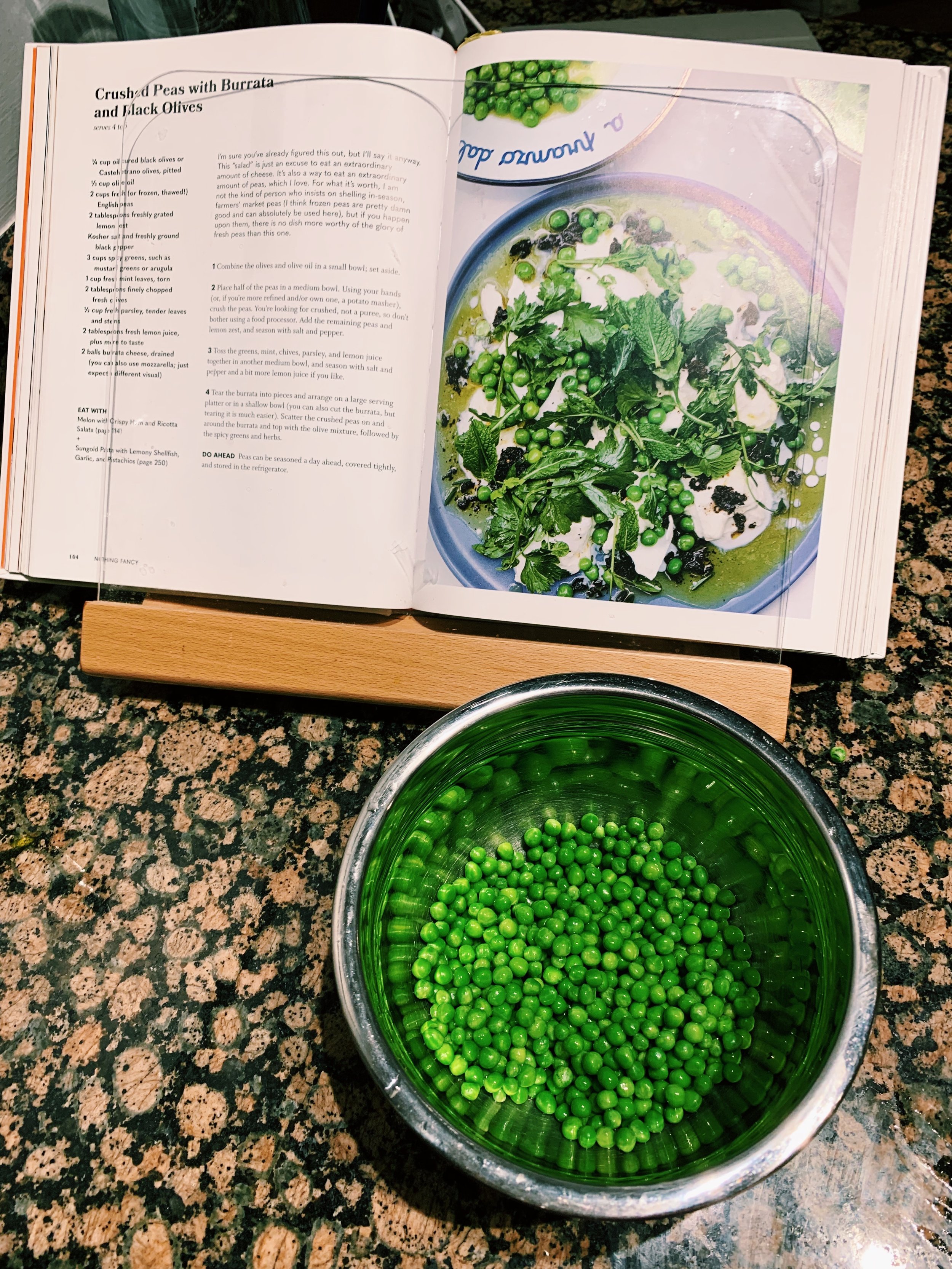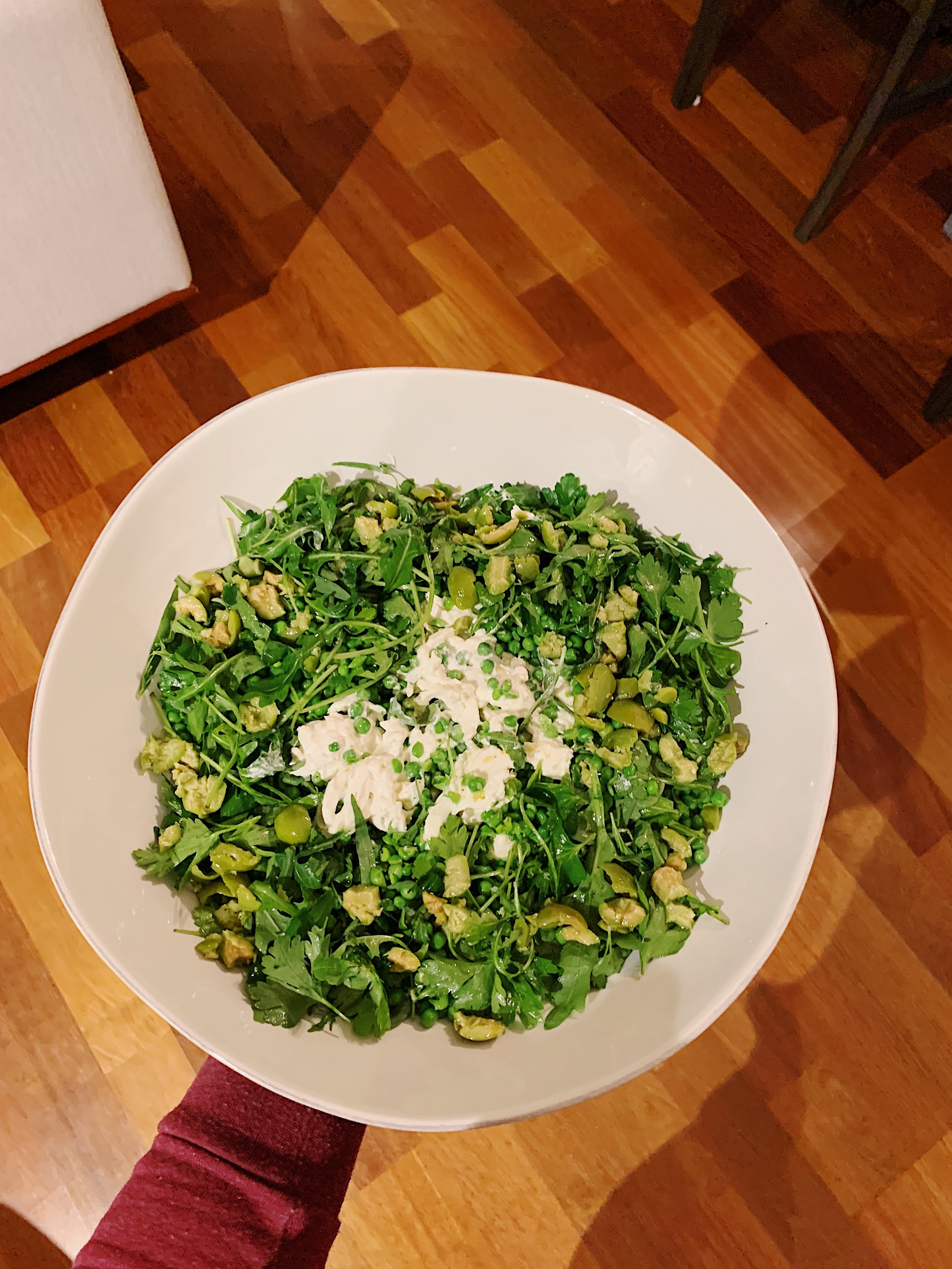“IT’S THE FI-NAL SAL-LAAAAADS!” (And some baked potatoes!)
The ones I waited longest to enjoy. Eating these two salads revealed two new discoveries: 1) Hard blue cheese actually isn’t so bad. 2) Black olives are the most inferior kind of olive. Those two ingredients are the sole reasons I waited so long to make these salads. They also confirmed one fact that I already knew by heart: 1) olive oil, lemon juice, salt, and pepper are all you need to dress a fantastic salad.
I just spent the last few days celebrating a dear college friend who’s getting married soon. A small group of us drove or flew to Sawyer, Michigan where several inches of snow and a cozy cabin by Lake Michigan awaited. Weekends like these remind me just how blessed by community I am. I’ve been gifted friendships with some of the most authentic, kind, goofy, thoughtful women. Perhaps what’s most impressive about them is that they are the same kind of people in friendship as they are in the world every day, towards friends and strangers alike. We don’t see one another more than maybe once a year, which makes our time together all the richer.
Those who flew, came in through Chicago airports, so they needed a ride to the cabin and back. We had some time to spend before their flights home, so I decided to involve them in making three of my final six recipes for a fancier-than-usual lunch.
We gathered around my kitchen island and assumed our positions…
Megan: She owns Dining In, and thus has cooked a good number of Alison’s recipes herself. So she took charge of making Alison’s Skillet Chicken with Crushed Olives and Sumac. We’ve both made this several times in the last year because it’s that good. (It’s also the recipe used for the cover of the book).
Molly: Standing at the corner of the counter, she expertly sliced and seeded a cantaloupe into half-inch thick rounds, then removed the outer skin. Alison says nothing about removing the rind, but we figured it’d be easier to eat that way (duh). Molly also took charge of thinly slicing the celery stalks — like a boss.
Anne: Standing in the middle, Anne eagerly volunteered to stab the russet potatoes all over with a fork to prep them for the oven. Post-oil, she sprinkled them with salt and pepper. She helped Molly remove the cantaloupe rinds. She coarsely chopped the walnuts and pistachios. She tossed the cantaloupe and arugula together and squeezed a whole lemon all over it. She topped the bowl with the chopped black olives and a handful of chopped chives.
Caroline: God bless her. At the far end of the counter, she oiled the potatoes by hand. After, she expertly sliced a fennel bulb into thin strips and a shallot into thin rings. She tossed the celery, fennel, lemon juice, shallot, toasted nuts, salt, pepper, and olive oil together. She crumbled the hard blue cheese on top and sprinkled the bowl with celery leaves. Anne and Molly helped with the celery leaves too. She finely chopped the black olives (I used a tiny can of pitted ones from Whole Foods.)
Yours truly: I played quarterback -- giving each teammate instructions at regular intervals. My few tasks included toasting the nuts in a skillet (I didn’t have enough walnuts to fill half a cup so I added pistachio meats into the mix— a great call), testing each dish and adding salt and pepper to taste, and setting out the baked potato toppings - sour cream, Greek yogurt, butter, flaky salt, pepper, and chopped chives.
This meal obviously consisted of dishes chosen by necessity. I didn’t consider a cantaloupe and black olive salad to be the first choice pairing for a baked potato bar. But much to my surprise, all four dishes felt surprisingly cohesive as a meal, with the celery and fennel salad as the strongest outlier.
Someone recently asked me what my favorite part has been about this project. My answer? The people I enjoyed the meals with. Every dish created an opportunity to invite people into my home, or bring the food to them, and commune together. Share an experience, talk about what we’re eating, the flavors we’re tasting. A chance to encourage and nourish the people I love. Yes, that is what brings me the most joy.
221, 222, and 223 recipes cooked, 2 to go.




